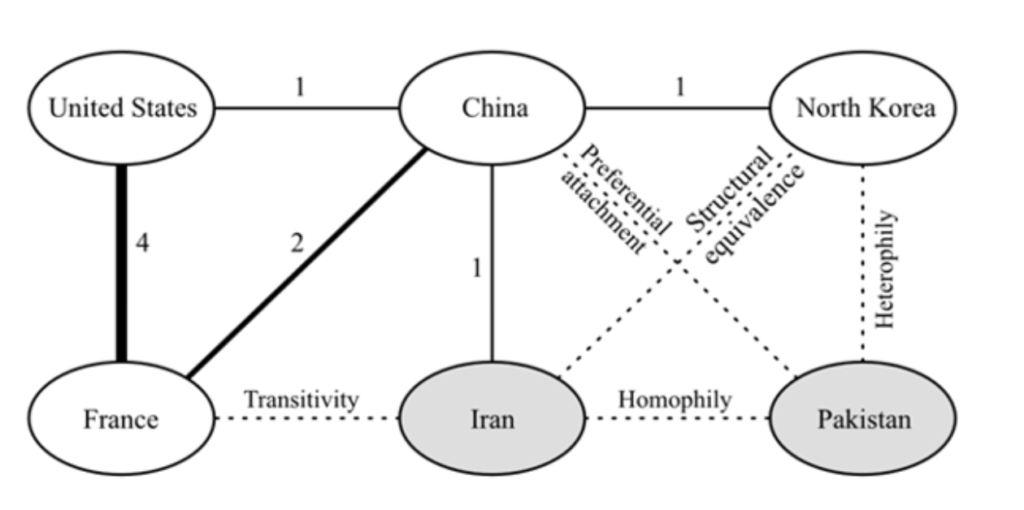The network in international relations is usually regarded as a special organizational model, which shows neither the hierarchical characteristics of countries and traditional international organizations, nor the bargaining relationship in the market. The value of network analysis in the study of international relations is reflected in the accurate description of international networks, the study of network effects of key international outcomes, the testing of existing network theories in the field of international relations, and the development of new data sources.
Network analysis describes the relational and individual mechanisms by which new network connections are likely to be created. The relational mechanism shows how the relative position in the existing network affects the formation of the connection. Individual mechanisms indicate specific properties of nodes.
Structural balance and structural equivalence are the two most important relational mechanisms in network analysis. Structural equilibrium theory assumes that there can be only specific patterns of positive and negative connections between the three nodes. In essence, my friend’s friend is my friend, and my enemy’s enemy is my friend.

We expect to see a link between Iran and France in the picture, as both countries have positive links with China. Structural equivalence predicts that nodes at similar structure positions will behave similarly towards other nodes. As the figure shows, Iran and North Korea may be linked because of their structural equivalence with China.
The individual mechanisms of network connection formation include homogeneity (the tendency of nodes to form connections based on common attributes) or heterogeneity (nodes form connections to share advantages and weaken disadvantages). For example, in the picture, Iran and Pakistan have similar geographical attributes and post-colonial identities, which may form a link. In addition, Pakistan and North Korea could form a partnership because they have complementary attributes of centrifuge enrichment technology and ballistic missile technology, respectively.
Finally, existing network connections also affect the generation of new connections. Under the condition of preferential attachment, the high center point will form more additional connections than the weakly connected nodes. In the picture, Pakistan may seek to attach itself to China because China is the most central node in the network. Countries that already have extensive connections through some networks are more likely to do so in others.

Network analysis can provide both an empirical basis for testing these ideas and a way to study the differences between the international community and individual societies. Network analysis provides a new perspective for case studies as well as new insights into common features of international relations.
Reference:
Emilie M. Hafner-Burton, Miles Kahler and Alexander H. Montgomery (2009). “Network Analysis for International Relations”. International Organization, 63(3), 559-592